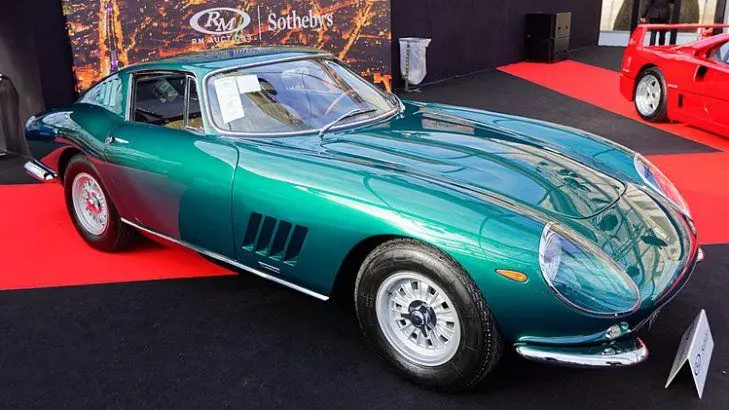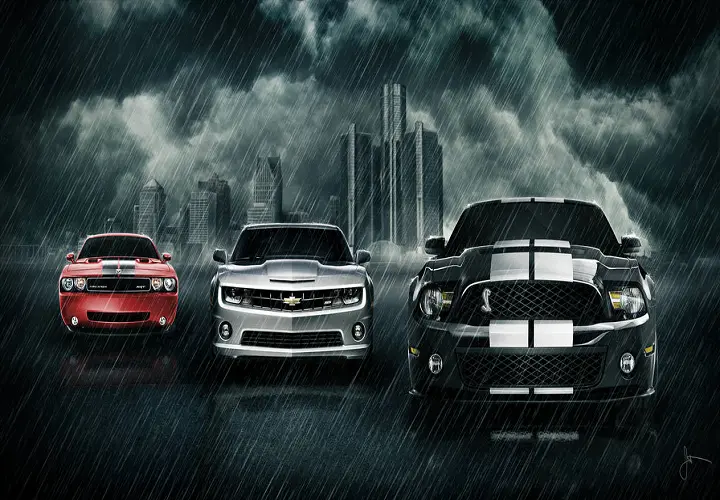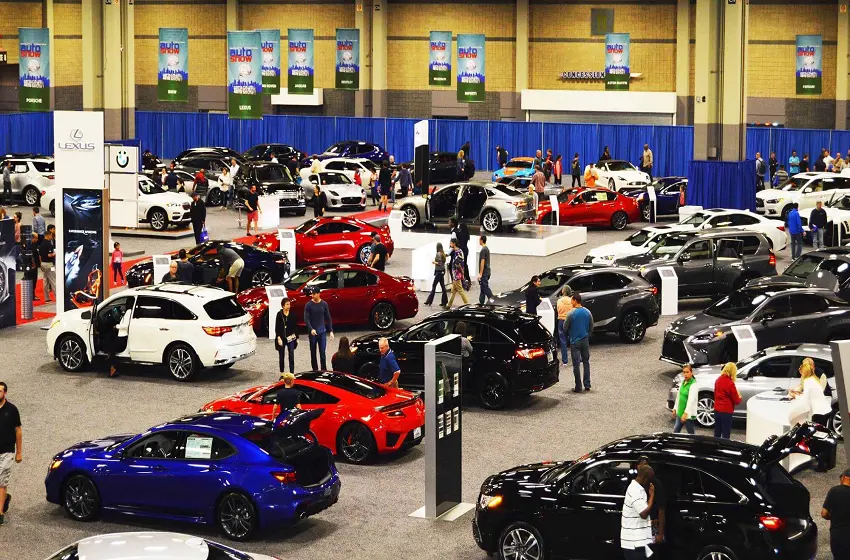Car shows have been the beating heart of automotive culture for over a century, bringing together enthusiasts, collectors and casual onlookers in a celebration of engineering, design and pure passion.
From the gleaming chrome of vintage classics to the cutting-edge technology of concept cars, these events offer a unique glimpse into the past, present, and future of our four-wheeled obsessions. Let’s rev up our engines and dive deep into the world of car shows, exploring what makes them such captivating spectacles.
The Allure of Car Shows: More Than Just Chrome and Rubber
A Brief History: From Local Meetups to International Extravaganzas
Car shows have come a long way since their humble beginnings. What started as informal gatherings of local enthusiasts has evolved into massive, global events that draw hundreds of thousands of visitors.
- 1900s: The dawn of the automobile age saw the first car exhibitions in Paris and London. These early shows were as much about educating the public about this new mode of transport as they were about showcasing the latest models.
- 1920s-1930s: The golden age of Art Deco saw car shows become more glamorous affairs, with manufacturers competing to create the most eye-catching displays.
- 1950s: The post-war boom in America led to the rise of hot rod shows, celebrating custom culture and DIY engineering.
- 1960s-1970s: Muscle cars and pony cars took center stage, with performance becoming a key focus of many shows.
- 1980s: The emergence of import car shows and tuner culture broadened the appeal of automotive events to a new generation.
- 1990s-2000s: Technology began to play a bigger role, with concept cars and in-car electronics becoming major draws.
- 2010s-Present: Integration of virtual and augmented reality experiences, alongside a growing focus on electric and autonomous vehicles.
Today, car shows range from intimate local gatherings to sprawling international affairs that occupy entire convention centers. They’ve become platforms for manufacturers to unveil new models, aftermarket companies to showcase innovations, and collectors to display rare treasures.
Why Car Shows Matter: Celebrating Innovation, Craftsmanship, and Community
Car shows serve multiple purposes in the automotive world:
- Innovation Showcase: Manufacturers and tech companies use these events to reveal new technologies and concept cars. It’s often the first chance for the public to see the future of transportation up close.
- Networking Hub: Industry professionals connect, share ideas, and form partnerships. Many deals and collaborations are born on the show floor.
- Economic Driver: Large shows can bring significant revenue to host cities. Hotels, restaurants, and local attractions all benefit from the influx of visitors.
- Educational Platform: Visitors learn about automotive history, engineering principles, and emerging trends. Many shows offer workshops and seminars.
- Community Building: Enthusiasts form connections and share their passion. Car shows often feel like family reunions for gearheads.
- Marketing Opportunity: Brands can engage directly with consumers, gathering feedback and building loyalty.
- Cultural Zeitgeist: Car shows reflect and influence broader cultural trends, from design aesthetics to environmental concerns.
“Car shows are where dreams and reality collide, where the past meets the future, and where every enthusiast can find their tribe.” – Jay Leno, renowned car collector and host
Types of Car Shows: Something for Every Gearhead
The world of car shows is diverse, catering to various interests and niches within the automotive community. Let’s explore some of the most popular types:
Vintage and Classic Car Exhibitions
These shows focus on vehicles from bygone eras, often meticulously restored to their original glory. They’re a feast for the eyes and a trip down memory lane.
Key Features:
- Vehicles grouped by era or manufacturer
- Judging based on authenticity and condition
- Often include memorabilia and period-correct displays
Notable Examples:
- Pebble Beach Concours d’Elegance: Held annually in California, it’s considered the most prestigious event of its kind.
- Amelia Island Concours: A celebration of automotive history on Florida’s coast, known for its eclectic selection of vehicles.
- Goodwood Revival: A unique event in the UK where attendees dress in period costume to match the classic cars on display.
Hot Rod and Custom Car Shows
For those who love modified vehicles and unique builds, these shows are a paradise of creativity and engineering prowess.
Key Features:
- One-of-a-kind builds and modifications
- Focus on craftsmanship and innovation
- Often include competitions for best paint, interior, etc.
Notable Examples:
- SEMA Show: The world’s largest aftermarket auto show, held annually in Las Vegas.
- Grand National Roadster Show: America’s longest-running indoor car show, showcasing the best in hot rodding.
- Detroit Autorama: Home of the prestigious Ridler Award for best custom car.
Exotic and Supercar Showcases
Featuring the fastest, most expensive, and most exclusive vehicles, these shows are all about automotive dreams and aspirations.
Key Features:
- Limited-production and high-performance vehicles
- Cutting-edge technology and design
- Often include luxury lifestyle elements
Notable Examples:
- Monaco Top Marques: Where luxury meets performance on the streets of Monte Carlo.
- Salon Privé: A high-end concours and supercar show held on the grounds of Blenheim Palace in the UK.
- The Quail, A Motorsports Gathering: An exclusive event during Monterey Car Week, known for its curated selection of extraordinary automobiles.
Manufacturer Reveal Events
These shows are where new models and concept cars make their debut, giving the public and press a first look at the future of automotive design.
Key Features:
- Unveiling of new production models
- Showcase of concept cars and future technology
- Press conferences and industry announcements
Notable Examples:
- Detroit Auto Show (NAIAS): A staple of the American auto industry, recently reimagined with outdoor experiences.
- Geneva International Motor Show: Known for high-profile unveilings and a neutral ground for international automakers.
- Frankfurt Motor Show (IAA): One of Europe’s largest auto shows, alternating years with the Paris Motor Show.
Motorsport-Focused Gatherings
Celebrating the world of racing and high-performance vehicles, these events often combine static displays with dynamic demonstrations.
Key Features:
- Mix of historic and contemporary race cars
- Live demonstrations and races
- Driver appearances and autograph sessions
Notable Examples:
- Goodwood Festival of Speed: A unique blend of historic and modern racing machines tackling the famous hillclimb.
- Rennsport Reunion: Porsche’s celebration of its racing heritage, held every few years.
- Silverstone Classic: One of the world’s largest classic motor racing festivals.
Behind the Scenes: Organizing a Successful Car Show

Putting together a car show is no small feat. It requires meticulous planning, coordination, and attention to detail. Let’s peek behind the curtain at what it takes to organize these automotive extravaganzas.
Venue Selection and Logistics
Choosing the right venue is crucial to the success of any car show. Organizers must consider:
- Space requirements: Adequate room for displays, foot traffic, and amenities
- Location accessibility: Parking for attendees, ease of transport for show vehicles
- Infrastructure: Power supply, Wi-Fi, sanitation facilities
- Weather considerations: Indoor vs. outdoor venues, contingency plans
- Local regulations: Permits, noise restrictions, safety requirements
Case Study: SEMA Show The SEMA Show in Las Vegas uses multiple halls of the Las Vegas Convention Center, totaling over 1 million square feet of exhibit space. The sheer scale requires a small army of workers and months of planning to transform the space into an automotive wonderland.
Participant Recruitment and Categories
A great car show needs great cars. Organizers must:
- Reach out to car clubs, collectors, and manufacturers
- Establish clear categories for judging and display
- Manage registration and entry requirements
- Balance variety to appeal to different interests
Example Categories for a Classic Car Show:
- Pre-War Classics (up to 1945)
- Post-War American (1946-1975)
- European Sports Cars
- Muscle Cars
- Preservation Class (unrestored originals)
Judging Criteria and Awards
For competitive shows, establishing fair and comprehensive judging criteria is essential.
| Category | Criteria | Points |
| Originality | Authenticity of parts, historical accuracy | 0-25 |
| Condition | Paint quality, interior preservation, mechanical soundness | 0-25 |
| Rarity | Production numbers, historical significance | 0-20 |
| Presentation | Display setup, owner knowledge | 0-15 |
| Documentation | Service records, ownership history | 0-15 |
Total Possible Score: 100 points
Awards might include:
- Best in Show
- Best in Class (for each category)
- People’s Choice
- Most Original
- Best Restoration
Sponsorship and Marketing Strategies
Funding and promoting a car show requires a multi-faceted approach:
- Securing corporate sponsors: Approach automotive brands, parts manufacturers, and local businesses
- Vendor partnerships: Offer booth space for relevant companies
- Media partnerships: Work with automotive publications and local media for coverage
- Social media campaign: Create engaging content and use targeted ads
- Influencer collaborations: Partner with automotive YouTubers and Instagrammers
- Community outreach: Engage local car clubs and enthusiast groups
Marketing Timeline Example:
- 6 months out: Announce date and venue, open early bird registration
- 4 months out: Release show poster and merchandise
- 3 months out: Begin social media countdown, announce special guests
- 1 month out: Ramp up local advertising, finalize schedule of events
- 1 week out: Daily social media posts, press releases to local media
The Car Show Experience: A Visitor’s Guide
Attending a car show can be overwhelming for first-timers. Here’s a comprehensive guide to make the most of your visit.
What to Expect: From Entry to Exit
- Arrival:
- Navigate parking or public transport options
- Go through security checks
- Collect your entry wristband or badge
- Orientation:
- Grab a show map or download the event app
- Plan your route, prioritizing must-see exhibits
- Locate amenities like restrooms and food vendors
- Exploration:
- Start with manufacturer displays for new models
- Move on to special exhibits or themed areas
- Take breaks to avoid sensory overload
- Interactions:
- Talk to owners about their vehicles
- Attend scheduled talks or demonstrations
- Visit aftermarket vendor booths
- Entertainment:
- Watch live vehicle demonstrations
- Participate in simulator experiences
- Attend celebrity meet-and-greets
- Shopping:
- Browse merchandise areas for souvenirs
- Check out parts vendors for your own projects
- Pick up literature and brochures
- Wrap-up:
- Cast your vote for People’s Choice awards
- Take final photos
- Check out the exit through the gift shop!
Interacting with Owners and Builders
One of the unique aspects of car shows is the opportunity to speak directly with the people behind the machines.
Do’s:
- Ask thoughtful questions about the vehicle’s history or build process
- Compliment specific details you admire
- Listen attentively – owners often have fascinating stories
- Thank them for sharing their passion
Don’ts:
- Touch the vehicle without explicit permission
- Lean on or place items on the vehicle
- Argue about modifications or historical accuracy
- Monopolize the owner’s time if others are waiting
Photography Tips: Capturing the Perfect Shot
Car shows are a photographer’s paradise, but they come with unique challenges.
- Timing is key:
- Arrive early for less crowded shots
- Use the “golden hour” just after opening or before closing for best lighting
- Equipment:
- Wide-angle lens for full car shots in tight spaces
- Macro lens for detail work
- Polarizing filter to reduce reflections
- Composition:
- Use the rule of thirds for balanced shots
- Look for interesting angles – get low or find elevated positions
- Include environmental context for storytelling
- Lighting:
- Be aware of harsh overhead lighting in indoor shows
- Use natural light when possible
- Consider using a diffuser for flash photography
- Details matter:
- Capture interesting design elements, badges, or engine components
- Look for reflections in chrome or paint for artistic shots
- Be respectful:
- Don’t block other visitors’ views
- Ask permission before using flash
- Be mindful of copyright for commercial use of photos
Family-Friendly Activities and Entertainment
Many car shows offer attractions for all ages, making them great family outings.
- Kid Zones:
- Automotive-themed coloring stations
- Slot car racing tracks
- Build-a-car workshops with oversized blocks
- Interactive Experiences:
- Racing simulators
- Virtual reality test drives
- Green screen photo opportunities with dream cars
- Educational Programs:
- “Meet the Engineer” sessions for aspiring automotive designers
- STEM workshops related to car technology
- Junior judging programs to learn about vehicle evaluation
- Live Entertainment:
- Stunt driving demonstrations
- Live music performances
- Celebrity appearances and autograph sessions
- Food and Refreshments:
- Themed food trucks
- “Picnic areas” for family breaks
- Alcohol-free zones for family-friendly environments
Spotlight on Iconic Car Shows

Let’s take a closer look at some of the world’s most renowned car shows, each with its unique flavor and focus.
Pebble Beach Concours d’Elegance: Crème de la Crème of Classics
Location: Pebble Beach, California Date: August (annually)
Highlights:
- Over 200 of the most prized collector cars and motorcycles
- Concept car lawn featuring futuristic designs
- Charity auctions raising millions for local organizations
What Makes It Special: The Pebble Beach Concours is the pinnacle of classic car events. Set against the stunning backdrop of the Pacific Ocean, it attracts the world’s finest automobiles and most discerning collectors. The judging is notoriously stringent, with experts examining every detail for historical accuracy and condition.
Notable Moment: In 2016, a 1936 Lancia Astura Pinin Farina Cabriolet once owned by Eric Clapton won Best in Show, showcasing the event’s appreciation for both engineering excellence and provenance.
“Pebble Beach isn’t just a car show; it’s a pilgrimage for anyone who truly loves automobiles.” – Ralph Lauren, designer and car collector
SEMA Show: Where Aftermarket Dreams Come True
Location: Las Vegas, Nevada Date: November (annually)
Highlights:
- Over 2,400 exhibiting companies
- Cutting-edge product demonstrations
- Celebrity builder showcases
What Makes It Special: SEMA (Specialty Equipment Market Association) is the ultimate playground for aftermarket enthusiasts. It’s where new products are launched, trends are set and the boundaries of automotive customization are pushed to the limit.
Notable Moment: The annual SEMA Battle of the Builders competition crowns the top custom vehicle builder, with past winners including legendary names like Chip Foose and Bobby Alloway.
Geneva International Motor Show: A Glimpse into the Future
Location: Geneva, Switzerland Date: March (annually)
Highlights:
- Major manufacturer reveals
- Concept cars and technology previews
- Neutral ground for international automakers
What Makes It Special: Geneva has a reputation for being the most level playing field in the auto show world. Switzerland’s lack of a domestic auto industry means no brand gets home-field advantage, leading to some of the most exciting and unexpected reveals in the industry.
Notable Moment: In 2019, the show saw the unveiling of the Bugatti La Voiture Noire, the most expensive new car ever sold at €11 million.
Goodwood Festival of Speed: Where History Meets Horsepower
Location: Goodwood, West Sussex, UK Date: July (annually) Highlights:
- Hill climb featuring historic and modern race cars
- Forest Rally Stage for off-road action
- Supercar runs and manufacturer displays
The Digital Revolution: Car Shows in the 21st Century
The automotive world is embracing technology, and car shows are no exception.
Virtual Car Shows: Bringing the Experience Online
- 360-degree vehicle tours
- Live-streamed unveilings and presentations
- Online voting for people’s choice awards
Social Media’s Impact on Car Show Culture
- Real-time updates and behind-the-scenes content
- Influencer partnerships for broader reach
- User-generated content sharing experiences
Augmented Reality: Enhancing the In-Person Experience
- AR apps for additional vehicle information
- Virtual modifications and customization previews
- Interactive museum-style exhibits
Beyond the Show: The Lasting Impact

Car shows have a ripple effect that extends far beyond the event itself.
Economic Boost for Host Cities
- Direct spending: Hotels, restaurants, and local businesses benefit
- Job creation: Temporary positions for event setup and management
- Tourism increase: Visitors often extend their stay to explore the area
Inspiring the Next Generation of Car Enthusiasts
- Youth programs and scholarships
- STEM education initiatives tied to automotive technology
- Hands-on workshops and demonstrations
Driving Technological Innovation and Design Trends
- Platform for unveiling new technologies
- Feedback loop between consumers and manufacturers
- Cross-pollination of ideas between different sectors of the industry
Car Shows and Sustainability: Navigating the Road Ahead
As the automotive industry shifts towards more sustainable practices, car shows are adapting to reflect these changes.
Showcasing Electric and Alternative Fuel Vehicles
- Dedicated EV and hybrid sections
- Alternative fuel demonstrations and education
- Charging infrastructure showcases
Eco-Friendly Event Practices
- Waste reduction and recycling programs
- Carbon offset initiatives
- Use of renewable energy sources for power needs
Balancing Nostalgia with Future-Focused Innovation
- Classic car electrification projects
- Restomod showcases blending old and new technologies
- Discussions on preserving automotive heritage in a changing world
Getting Involved: From Spectator to Participant
For those inspired to take a more active role in car shows, here’s how to get started.
Finding Local Car Shows and Meetups
- Check automotive forums and social media groups
- Look for flyers at local auto parts stores and repair shops
- Use event discovery apps and websites
Preparing Your Ride for the Spotlight
- Detailing: Thorough cleaning inside and out
- Maintenance: Ensure everything is in working order
- Documentation: Gather history and modification details
- Display: Create informative placards or digital presentations
- Practice: Rehearse talking points about your vehicle
Networking and Community Building
- Join car clubs related to your interests
- Attend smaller local meets to build connections
- Volunteer at shows to gain behind-the-scenes experience
The Future of Car Shows: Adapting to Changing Times
As the automotive landscape evolves, so too will car shows. Here’s what we might expect in the coming years.
Emerging Trends and Technologies
- Increased focus on mobility solutions: Beyond traditional vehicles
- Integration of AI and autonomous vehicles: Showcasing the latest in self-driving tech
- Personalization and customization: 3D printing and on-demand manufacturing demos
Predictions from Industry Insiders
- “We’ll see a blend of physical and digital experiences, allowing for global participation.” – AutoShow CEO
- “Sustainability will be at the forefront, with carbon-neutral events becoming the norm.” – Environmental Consultant
- “Niche shows catering to specific interests will grow in popularity.” – Car Club President
The Enduring Appeal of Automotive Gatherings
Despite changes in technology and culture, the core appeal of car shows remains:
- The thrill of seeing rare and beautiful machines up close
- The camaraderie of sharing a passion with like-minded individuals
- The inspiration to dream, create, and innovate
Car shows have been a staple of automotive culture for over a century and they continue to evolve with the times. Whether you’re a die-hard enthusiast or a casual observer, these events offer a unique window into the world of automobiles. From the roar of engines to the gleam of polished chrome, car shows capture the essence of what makes cars more than just transportation—they’re a reflection of human ingenuity, artistry, and passion.
As we look to the future, car shows will undoubtedly face challenges and changes. But as long as there are people who love cars, there will be gatherings to celebrate them.
So mark your calendars, polish your ride and get ready to experience the excitement of the next car show near you. Who knows? You might just find your next dream machine or make a connection that fuels your automotive passion for years to come.

With over 5 years of dedicated experience in the automotive industry, I am passionate about all things automotive. My journey began with a deep curiosity for automobiles, which led me to delve deeper into their mechanics, technology and trends. My expertise spans various aspects of the automotive world, from the latest electric vehicles to classic car restoration techniques. Through my articles, I aim to share my knowledge and insights, helping readers stay informed and inspired in the fast-paced world of the automobile.











